CZ SP-01
Howdy folks, and welcome back. If you read last week’s post, you’ll remember we looked at the 1911 again, but this time focusing just on that sweet, sweet SAO trigger. This week, we’ll look at the first major attempt to solve the problems of Single Action Only, the Double Action/Single Action.
Our exemplar this week is the CZ SP-01, a member of the CZ-75 clan. As you can see, this one is pretty modern, with accessory rail, optic, etc. To really see where DA/SA came from, we’ll have to look a bit further back.
You can think of the Single Action system as a rock teetering at the top of a hill, merely waiting for a wedge to be knocked loose before it rolls down and strikes the primer.
All of the earliest autopistols were single action designs. Many, unlike the excellent 1911, featured little or nothing in the line of safety devices. The expectation, I suppose was for empty chamber carry. Although some of the awful triggers in early guns could have served as safety devices all on their own. That made many unsuitable for carry in a fully loaded state.
A Double Action trigger is more akin to rolling the rock up one side of the hill, over the top, and letting it go down the other side. You’re doing all the work at once, no precarious perching involved.
As early as 1909, designers were trying to solve the real and perceived problems with the SAO design. Alois Tomiška, from Czechoslovakia, saw the solution of the double action trigger of the revolver, in which the trigger works through a long, heavy pull to first cock the hammer, then releases it to fire the pistol. He decided to incorporate that idea into an autopistol. The “Little Tom” was patented in both Britain and Austria, and Tomiška even formed a company, Wiener Waffenfabrik, (Vienna Firearms Works, more or less,) to produce them in both .25 ACP and .32 ACP. Sales were slow, however. He returned to Czechoslovakia, and went to work for Jihočeská Zbrojovka, which later became part of Česká zbrojovka, better known and more easily pronounced as CZ. (Really. Don’t ask me to try and say any of these Czech names. I candidly admit, I can’t even spell them without copying and pasting.)
The Little Tom faded away due to slow sales by about 1925, but the idea was alive and well. In Germany, in 1929 a little gun known as the Walther Polizeipistole, or Police Pistol, or PP for short took the next step. This was a sleek looking little blowback design, in .32 ACP or .380 ACP, and became a common sidearm for European police forces. It also gave rise to the famous Polizeipistole Kriminal, the compact version known as the Walther PPK. Together, these were the first truly successful double action auto-loaders.
By later standards, they aren’t really all that great. They’re heavy for their size, being made of steel, yet being simple blowback actions, the recoil is obnoxious, even in the mouse-gun calibers. The DA trigger is especially egregious. The travel is quite short, but that just makes for excessive pull weights.
When the Wehrmacht needed a new service pistol, one that was cheaper and easier to produce than their iconic but expensive P08 Luger, they went to Walther and asked for one of the new double action designs, but they wanted one that would fire full power 9MM Luger ammunition. That would require a new design, one with a locked breech. It also incorporated an inproved double action mechanism.
The new gun, of course, was the Walther P38. It had a decocking lever to safely lower the hammer and allow for loaded chamber carry, with the long heavy double action pull functioning as the safety device. The DA pull was long enough that the resulting mechanical advantage made the pull weight more manageable than the PP or PPK.
After the war, American officials were impressed with the new system. In 1954, the Army even held trials to find a pistol to replace the 1911. One of the top contenders was the S&W Model 39, very much inspired by the P38. The Army abandoned its testing, however, and stuck with the old warhorse for another thirty years.
The Model 39 wasn’t dropped, but went on the commercial market in 1955. It even found some traction with law enforcement, being adopted by the Illinois State Police in 1967. When the double stack Model 59 followed, so did more adoptions. The new pistols didn’t have the aggressive, hammer cocked look that had prevented widespread adoption of the 1911 by public facing agencies.
The DA/SA also made for an easier sale to law enforcement agencies transitioning from revolvers, because officers would presumably already have been trained on both modes of firing with their revolvers.
For a while, the DA/SA system was the wave of the future. S&W went through three generations of their classic metal-framed DA/SA. When the US military did finally part ways with the 1911, they took up with the Beretta M9/92, a DA/SA. SIG Sauer, at the time a Swiss company, also got in on the act with their P220 and P226 models. The P226 is what my hometown’s PD carried, about the time I was old enough to become aware of such things.
CZ themselves began to make inroads with the CZ-75, introduced in 1975. That one had the unusual ability to be carried cocked and locked, like an SAO, but still have the double action mode as a backup.
From the first semi-auto adoptions in the late sixties through to the end of the nineties, if a department wasn’t carrying a revolver, there was an excellent chance they were carrying a DA/SA.
Late in that cycle, however, certain problems began to emerge. The first was a training issue. The second generation of auto-pistol police, the ones who didn’t transition from a revolver, but were initially trained on a DA/SA, had the additional training issue of having to master two different trigger pulls. Lots of writings from the time indicate that many of them simply didn’t. First round misses were common. The other possibility was that officers would lose a valuable split second trying to thumb cock their piece. Jeff Cooper, a bit biased in favor of his beloved Government Model, never lost an opportunity to castigate people shooting “crunchentickers,” the folks who would intentionally throw the first shot away, just to get to the easier to shoot single action pull of the remaining rounds.
The second potential problem was that after pulling that first DA pull, likely 12-14 lbs, and close to an inch of travel, the trigger finger tended to expect more of the same. That second pull, more like 4 lbs and a sixteenth of an inch of travel, could come as a surprise. Claims of second round unintentional discharges started to circulate.
Such were the conditions when next week’s gun came on the scene, touting the same trigger pull from the first round to the last. The “Glock Safe Action.”
However, right toward the end of their agency heyday, the DA/SA got a second lease on life in the competition world. USPSA, the major sanctioning body for practical shooting in the US, took a look at the their Open Division winners, and their high cap 1911s, wearing frame mounted red dots, compensators, and any other techno-wizardry that could be concieved, and decided that they had strayed far from their roots in “practical” shooting.
In the mid nineties, they inaurgurated “Production Division,” a safe space, away from all the 1911s, for the double action and striker fired autos to play. For the first few years, the Berettas, SIGs and Glocks were all on equal footing. The DA guns had a better trigger after the first shot, but the rules made them start hammer down. That issue of old two trigger pulls to train for. Then in the early 2000s, CZ brought out a special tactical edition of their by then venerable CZ-75, the SP-01. The now-iconic full rail had originally been designed for the compact, alloy framed P-01. Being made of aluminum, it didn’t add much weight. When they made a full sized version in all steel, that rail suddenly got very heavy. For about five minutes, the whole firearms world laughed. What were the Czechs thinking? Who would ever--
Wait. Wait a minute. That guy just took it to a match. All that weight… what happened to his recoil? It just disappeared! The Czechs were no fools. I don’t think they saw the runaway hit coming, but they soon jumped on board and produced an upgraded SP-01, one with drop-free mags and crucially, no firing pin safety to louse up the trigger pull. Being a production gun made it… wait for it… Production Division legal. Thus was the Shadow, and later Shadow II, born. They’ve been the reigning monarch of every division that doesn’t let the 1911 in to play ever since. (Except Revolver, obviously.)
This particular gun is an SP-01, not a Shadow, largely because a good deal was had. Dad’s Production Division gun was a Shadow, but when he decided he wanted to try the then-new Carry Optics, he looked around and found this one. With Cajun Gunworks action tuning, and the Leupold Deltapoint optic, one scarcely notices the difference. It’s big, it’s heavy, it’s fast, and it’s accurate. This particular optic has a triangular reticle. One can use the whole triangle for blasting, or focus down on the tippy top for fine precision.
To most, the DA/SA is a memory. The S&W metal framed guns are long gone, discontinued in 1999. The M9 that replaced the 1911 has itself been replaced. Sig is… well, I’ve never owned a Sig product, so I’ll refrain from comment on what they’re up to. But CZ… CZ has found an interesting afterlife in comptetition circles. I think they are making inroads in the real world, too.
Thanks for reading and make sure to subscribe, so you won’t miss a post!

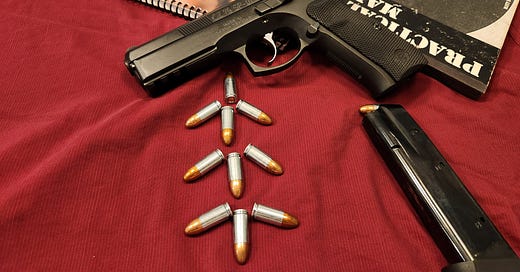




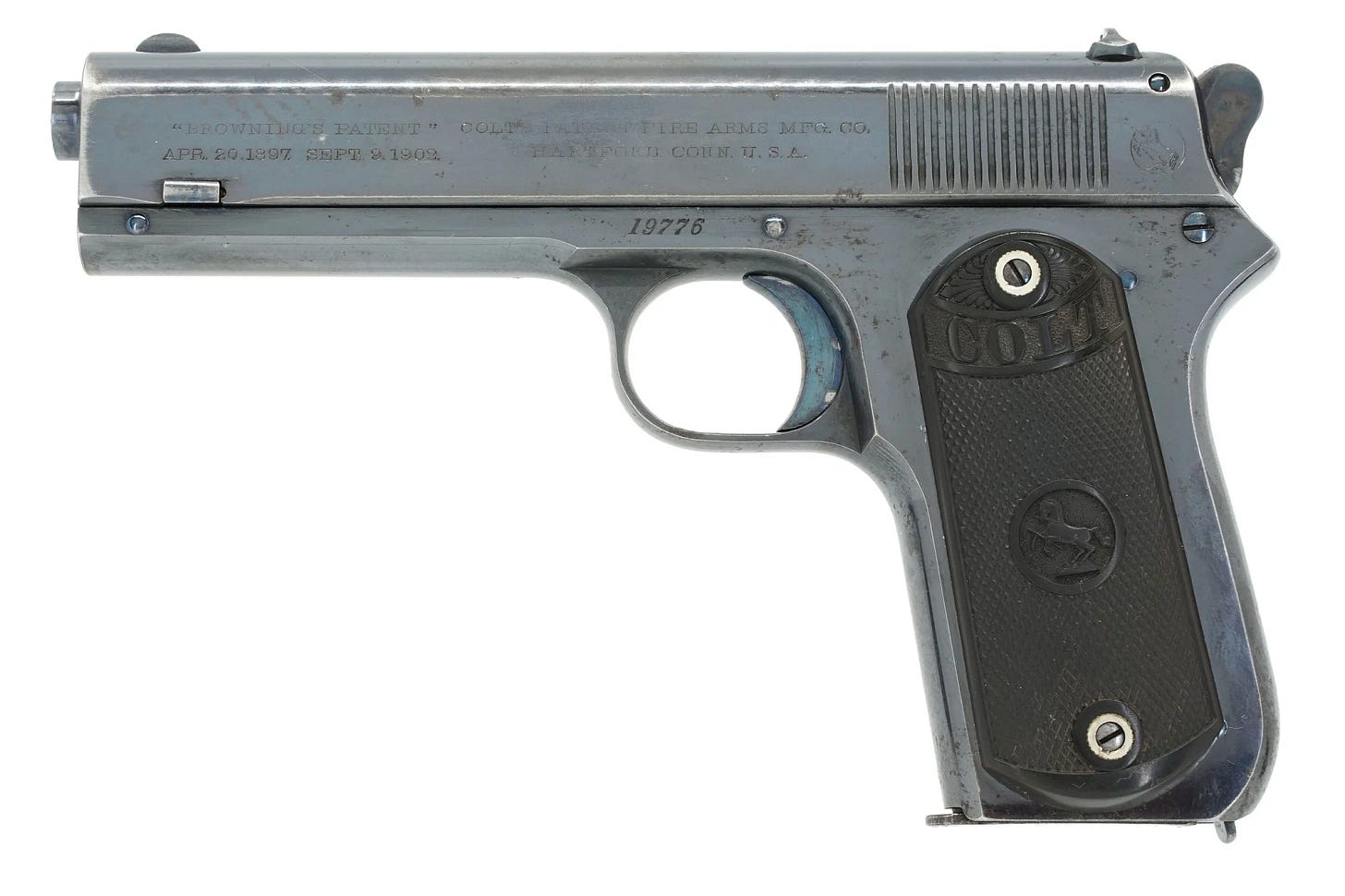


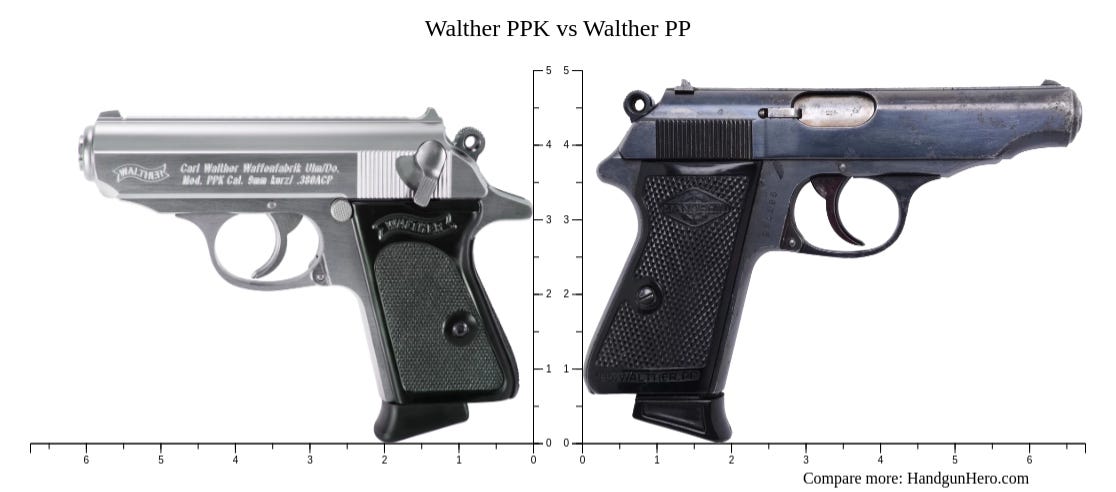


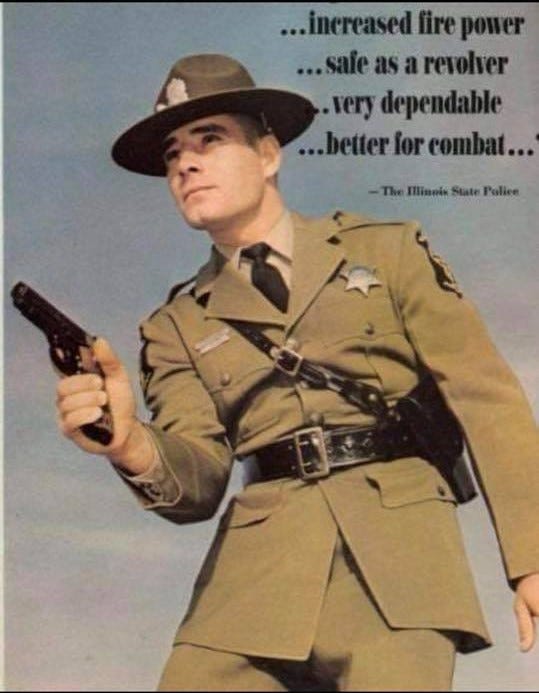



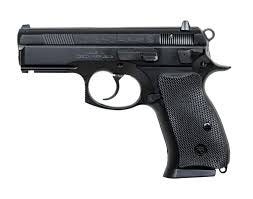
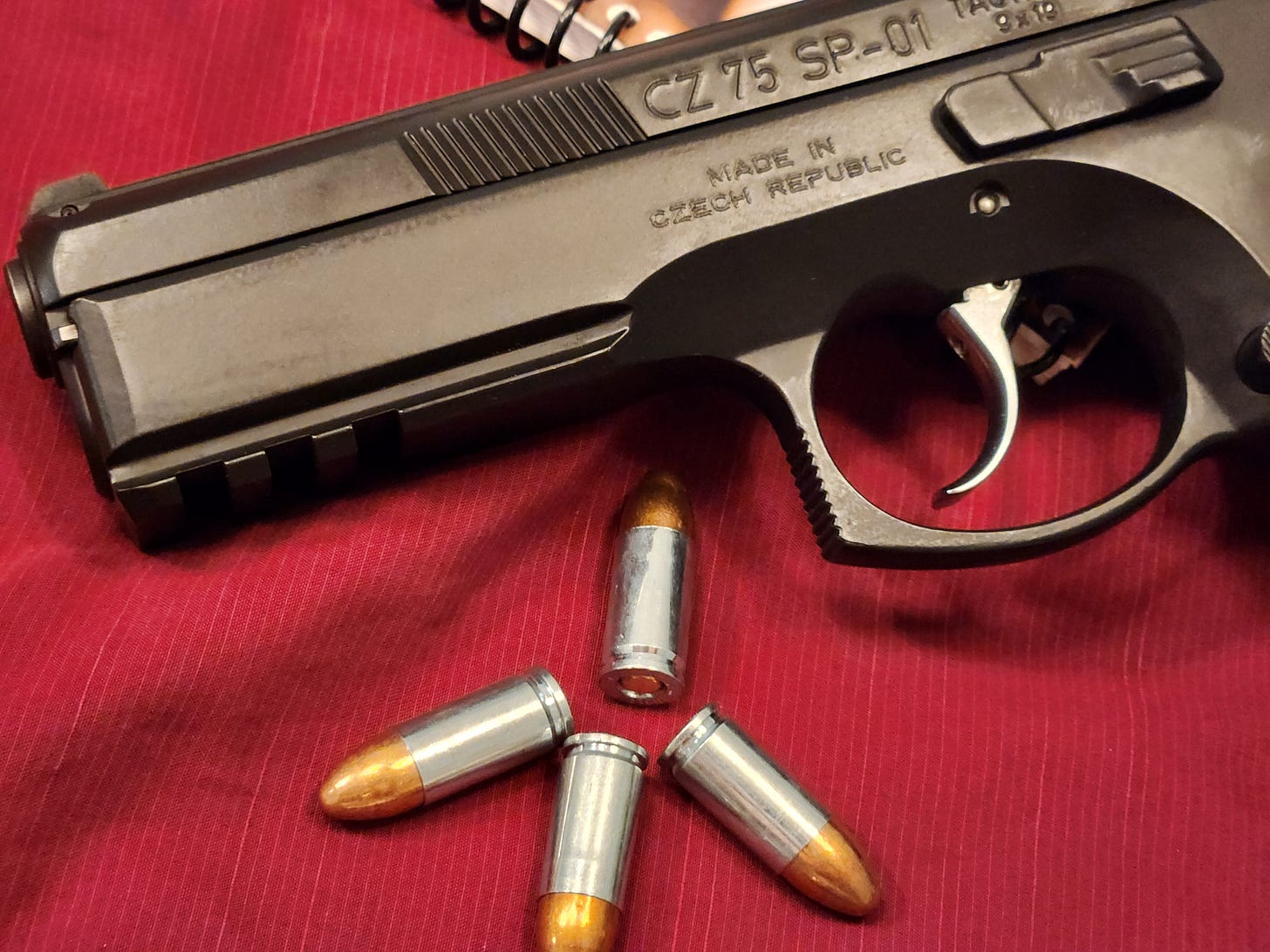
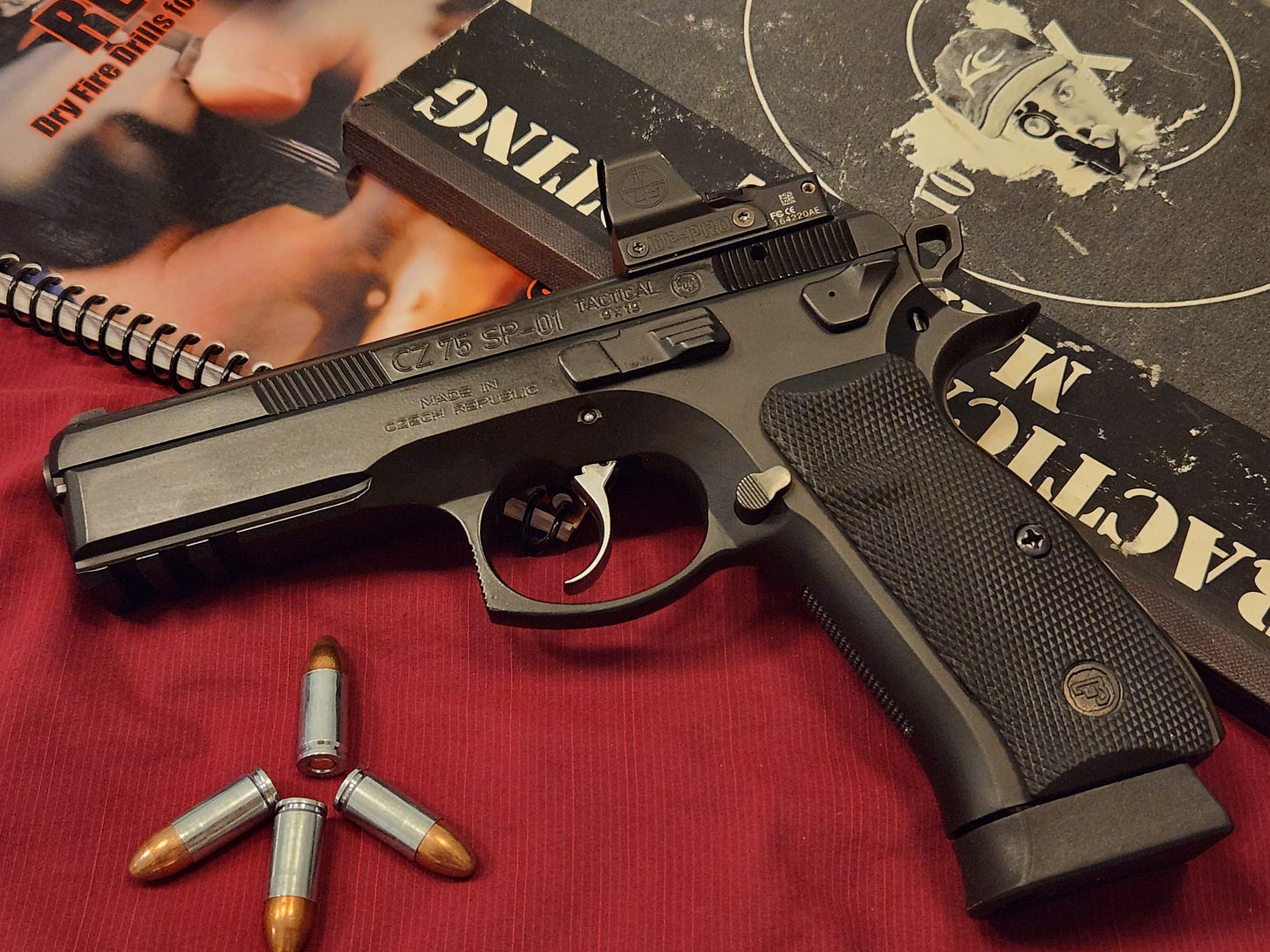
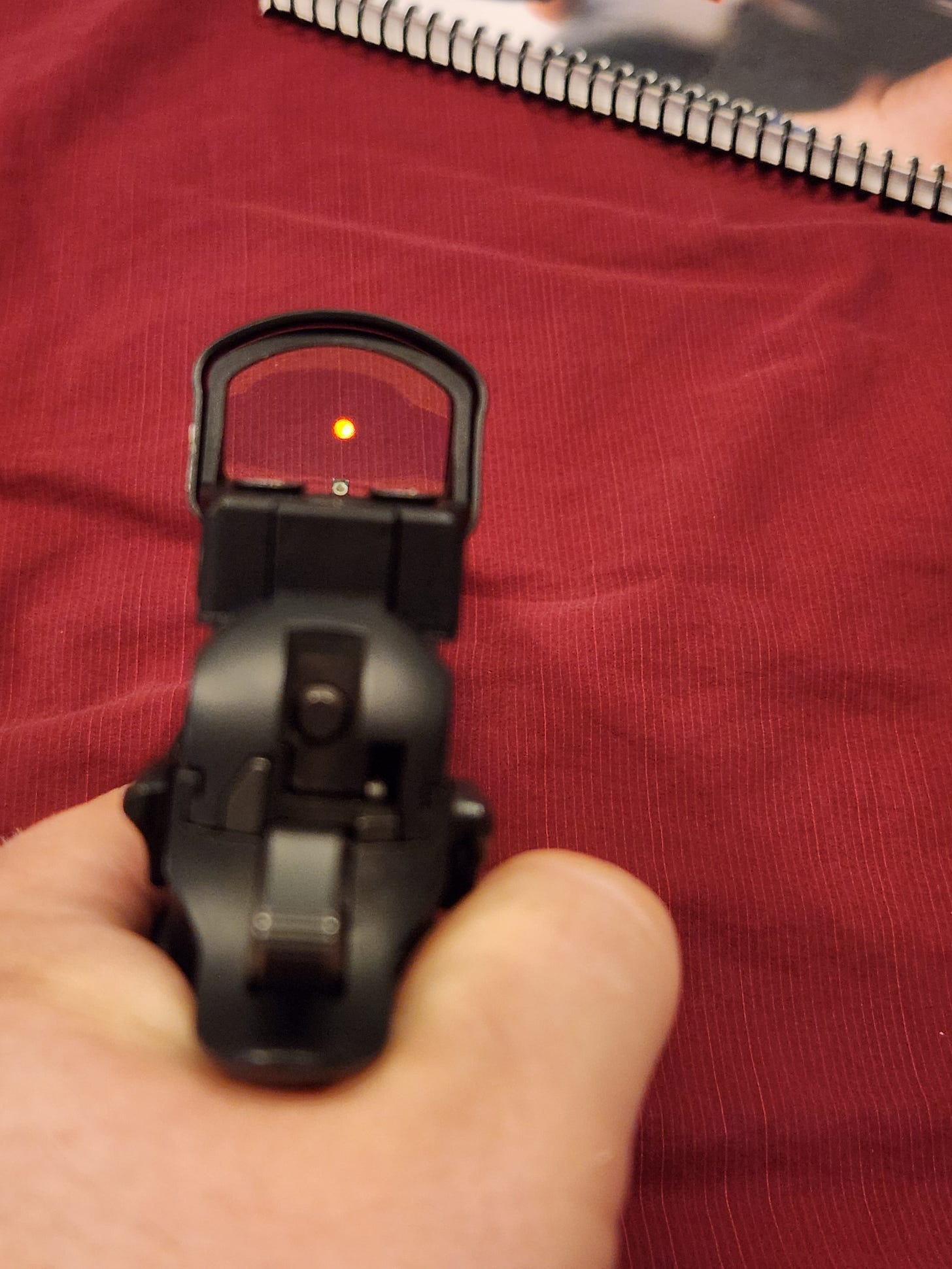
I have a CZ97, which is chambered in god’s caliber. Heavy as hell, but a sweet trigger and accurate.
Nine years ago when my daughter was turning 21, she told me she wanted a CCW pistol she could count on and that she would be comfortable carrying. We spent close to four hours on a range shooting almost every 9mm, .380, .45 and even .38/.357 pistols and revolvers. As we were getting tired, the range owner brought down a CZ-75 and her prayers were answered! It goes with her everywhere! Hiking, dinner, jogging, in her truck, on her bike. After nines years she hasn’t found a place or a way she can’t take it. And the even with the high miles she runs weekly, the finish is still nice!